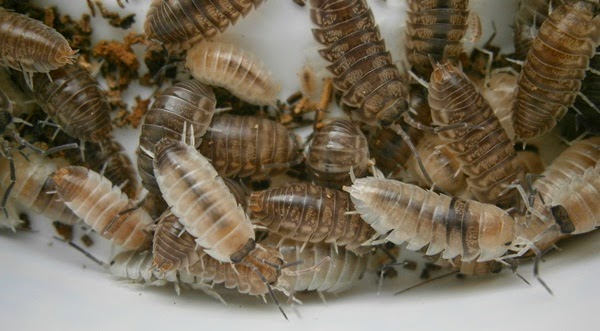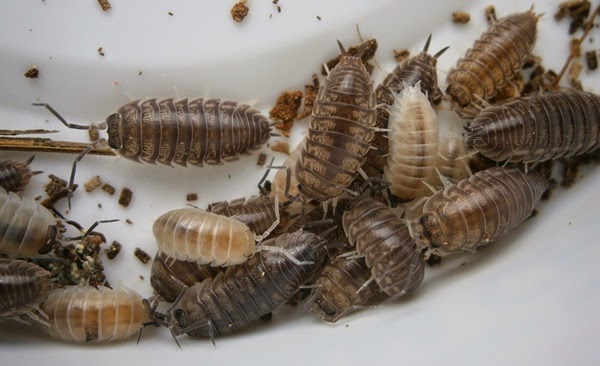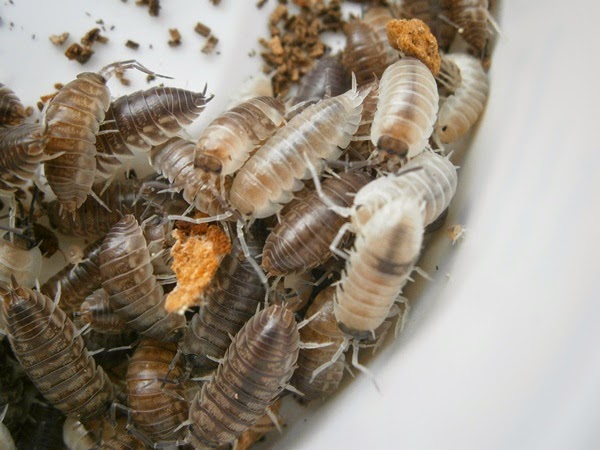Really!?!?!? I've never heard of roaches eating isopods, shows how much I know! :lol:Idk why but my Ischnoptera bilunata (both adults and large nymphs) seem to enjoy eating A. vulgare even though I provide enough food.
Guest viewing is limited
- You have a limited number of page views remaining
- 0 guest views remaining
- Register now to remove this limitation
- Already a member? Click here to login
You are using an out of date browser. It may not display this or other websites correctly.
You should upgrade or use an alternative browser.
You should upgrade or use an alternative browser.
what isopods do you keep?
- Thread starter Hisserdude
- Start date
phasmes222
Second Instar
Hello everyone, i have only Trichorhina tomentosa, but i really like isopods. And i wanna buy or exchange other species, especially non-european species. But that's difficult to found.
blacksheep998
Ootheca
Where are you located? I've got plenty of Porcellio scaber 'Orange' and 'Dalmatian' but can only ship to the US.Hello everyone, i have only Trichorhina tomentosa, but i really like isopods. And i wanna buy or exchange other species, especially non-european species. But that's difficult to found.
phasmes222
Second Instar
In france. ^^
Does they are fast to grow?
Does they are fast to grow?
blacksheep998
Ootheca
Yes, P. scaber grows and breeds quickly.
About a year ago I separated a single female carrying eggs into a container by herself. Today she's got well over 300 descendants.
About a year ago I separated a single female carrying eggs into a container by herself. Today she's got well over 300 descendants.
phasmes222
Second Instar
Wow that's fast. I think i'll found some on this forum. That seem's cool even if for the moment i only have the most common species.
pannaking22
Gyna
Finally on the board lol. I have T. tomentosa and O. asellus, but hoping to pick up a couple more neat species when things warm up some.
Well .... I've officially joined the Isopods Mafia ....I keep the following:
Giant Orange
Costa Rican Dwarf Purples
Dwarf Whites
Multi strip dwarfs
Temperate Springtails ( not sure what temperate means )
Giant Springtails ( these are really huge )
Sorry I don't know latin names. I've ordered two Isopod books on ebay which should give me a good knowledge. These isopods seem to be as addicting as roaches.
Giant Orange
Costa Rican Dwarf Purples
Dwarf Whites
Multi strip dwarfs
Temperate Springtails ( not sure what temperate means )
Giant Springtails ( these are really huge )
Sorry I don't know latin names. I've ordered two Isopod books on ebay which should give me a good knowledge. These isopods seem to be as addicting as roaches.
Cool!  I'm gonna be getting the dwarf whites as well, can't wait till they come!
I'm gonna be getting the dwarf whites as well, can't wait till they come!
Roach collector
Seventh Instar
I keep armadillidium maculatum and also a porcelio scaber 'hybrid'
Not sure if I ever posted pics here of these guys, but I'll post them anyway.  These are my favorite isopods I currently own, a "Pied" morph of Cylisticus convexus that I isolated from individuals I caught here in Idaho.
These are my favorite isopods I currently own, a "Pied" morph of Cylisticus convexus that I isolated from individuals I caught here in Idaho.
Here are some pictures of them mixed in with normal individuals:



The isolating process is taking a while, they were mixed in with normal ones so the females are still producing brown offspring. One of the recent babies looks normal but has a white antenna, so it looks like they are finally starting to produce "Pied" individuals!
Here are some pictures of them mixed in with normal individuals:
The isolating process is taking a while, they were mixed in with normal ones so the females are still producing brown offspring. One of the recent babies looks normal but has a white antenna, so it looks like they are finally starting to produce "Pied" individuals!
